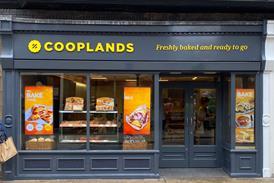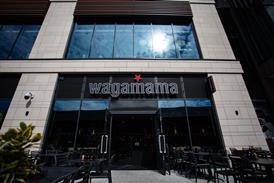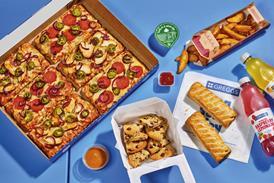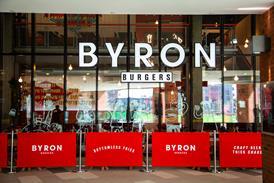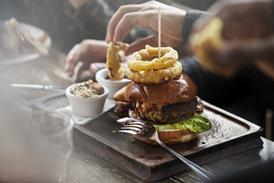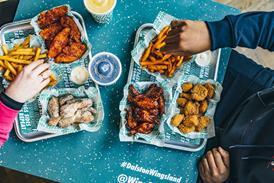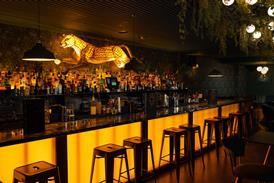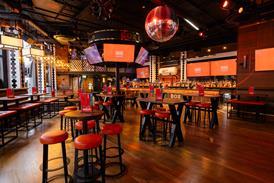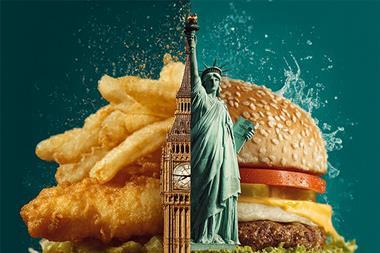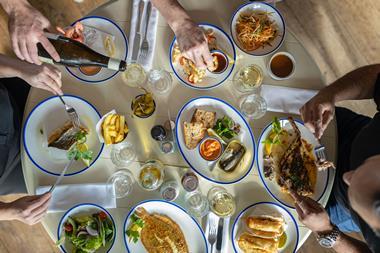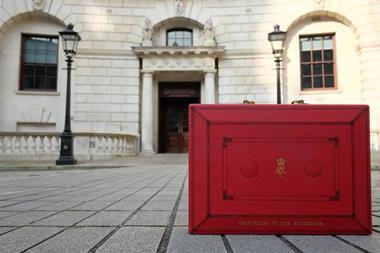High beef prices are driving change at the centre of the plate, but to create winning menus, operators must first understand consumer demands. Darren Tristano reports.
There’s a classic marketing campaign used since the early ’90s in the States that boasts, “Beef. It’s what’s for dinner.” But with high costs and innovations around other proteins, beef may not necessarily be what’s for dinner in 2015.
Last year, US consumer prices for beef and veal rose almost 19%, the biggest yearly jump in a decade. In a Technomic survey, almost seven in 10 consumers confirmed that they had noticed rising beef prices in 2014. Thanks to the continuing drought in the south-west states along with a low cattle inventory and rising export demand, prices are expected to continue to rise this year and for several more years to come.
Demand is still high
Though prices are up, most consumers eat beef very frequently. Nine out of 10 consumers say they consume beef as an main dish or as an ingredient/topping on a main dish once a week or more often, according to the 2015 Center of the Plate: Beef & Pork Consumer Trend Report, and more than half of respondents report eating it three or more times a week. Men are more likely than women to eat beef as a centre-of-the-plate option. In fact, 93% of men (v 89% of women) say they eat beef as a main dish at least once a week.
The proportion of consumers who say they eat beef at least once a week has held relatively steady during a two-year period. In 2012, 92% of consumers reported that they consume beef at least once a week.
Additionally, consumers do not anticipate any significant changes in their beef purchasing behaviour in the next few months. At least seven in 10 consumers say that they expect to be purchasing the same amount of beef as they currently do from restaurants, retail foodservice and retail locations. However, more consumers indicate they will decrease rather than increase their purchases of beef, indicating that consumption of beef may slightly decline in the next three months.
Those aged 35 and older are far more likely than younger consumers to say their beef purchases are holding steady. Meanwhile, consumers aged 18 to 34 are roughly twice as likely to indicate that they will purchase beef more often at both restaurants and retail in the coming months. And more men than women say they expect to purchase beef more often at restaurants.
Consumers who expect to purchase beef more often from restaurants during the next three months were asked why. They cite the desire to add more protein in their diet as the primary reason.
And more than two fifths of consumers say that trying new beef items is one of the reasons they expect to purchase beef more often from restaurants.
Pricing influence on purchases
Financial considerations are also influential motivators for eating beef. A notable proportion of consumers cite the expectation of having more money to spend (39%) and the attractive pricing of menu items made with beef (29%) as reasons for purchasing beef more often at restaurants during the next three months. These findings probably speak most to consumers’ enduring interest in value, from which industry leaders such as McDonald’s and Wendy’s continue to benefit by offering affordably priced beef dishes on value menus.
While rising beef prices continue to be a concern for US foodservice operators and suppliers, slightly less than half of all consumers polled (47%) and 51% of those aged 35 and older say they have noticed the prices of beef dishes on restaurant menus have increased during the past year. As a likely response to the increasing prices, 21% say they are ordering more non-beef dishes now than a year ago. In addition, about the same proportion say they are purchasing more ‘value’ cuts of beef now than they did a year ago due to rising prices.
For some consumers, a slightly higher cost for beef dishes will not necessarily change their behaviour. In fact, 46% of consumers say they have not changed their behaviour as a result of rising beef prices. However, compared to older consumers, younger consumers are much more likely to indicate that they are choosing more non-beef dishes to save money and are purchasing ‘value’ beef cuts more often. This may be because older consumers generally have more disposable income than younger consumers do.
Overall, data indicates that the rising beef prices at restaurants do have impact on many consumers’ restaurant visits and consumption of beef items. As a result of increased beef prices, at least a fifth of consumers say they are going out to eat less often and order fewer beef items compared to a year ago.
Interestingly, in 2012, Technomic asked consumers how they would change their behaviour if the price of beef dishes at restaurants were to increase. More than two fifths of consumers said they would order fewer beef items (49%) and go out to eat less often (43%), and just 23% said they would not change their behaviour regardless of how much prices increased. This suggests rising beef prices may not have had as significant an effect on consumer behaviour as they expected. Consumers’ predicted behaviours and actual behaviours don’t always align.
Restaurant operators respond
To combat both consumer attitudes and high beef prices, US restaurateurs are strategically updating their menu mix. Some operators are turning to other proteins. The pork prices that spiked in 2014 are expected to rise only 2% to 3% this year at retail, while poultry prices are expected to be up 2.5% to 3.5%. Having done the maths, restaurants are turning out innovative, ethnically inspired and barbecued pork and chicken dishes to replace beef items.
There are many ways that pork and poultry are winning on menus:
● Pork sandwiches, centre-of-the-plate items, flatbreads and pastas
● Flavourful barbecue pork preparations, ethnic barbecue fare, and cured pork –
particularly bacon and prosciutto
● Innovative pork and chicken
sausage, such as fennel sausage or spicy
chicken sausage
● Chicken promotions, particularly at burger chains (including Burger King and Culver’s)
Other restaurants are leveraging smaller beef portions and meat blends featuring bold, interesting flavours. Concepts touting flavourful yet affordable beef items are likely to find favour with consumers.
Here are a few trending dishes with less beef, more impact:
● Smaller-portioned beef cuts served with extra sauces, toppings and side dishes
● Sliders – which have increased 13% on menus of the Top 500 Chain Restaurants (by US systemwide sales) since 2012
● Beef and steak bites – which align well with the overall trend toward snacking
● Tacos, including steak and seasoned ground-
beef varieties
● Steak-topped fries, macaroni and cheese, nachos or flatbreads
● Housemade burger blends with new flavour profiles, such as a ground beef and ground bacon mixture
● Meat blends such as meatballs, franks or pepperoni made with chicken, pork and beef
Finally, operators are purchasing cheaper cuts of beef and slow cooking them into flavourful submission. More than two thirds of consumers say they’re interested in flavour imparted to beef via preparation styles, such as roasting or braising. Slow-cooked beef cuts are likely to make a bigger showing in 2015, with more operators imparting flavour to tougher, value beef cuts through preparation methods like slow roasting. Also part of the prep kit are ethnically inspired rubs and sauces.
Trending value front-end beef cuts will include chuck, brisket, short ribs, shank, shin and cheek. Braises will range from smoked chipotle to coffee to chocolate. New ethnically inspired dry rubs and paste rubs will also emerge. Look for shredded slow-cooked meats to be used in egg rolls, quesadillas, poutine, barbecue sandwiches, tacos and more.
Key takeaways
Concepts touting flavourful, yet affordable, beef items are likely to succeed in today’s cost and consumer environment.
Fast-casual concepts that feature small but savoury meat portions and a variety of proteins are already growing fast. Look for more fast-casual taco, sausage, torta, barbecue and even centre-of-the-plate steak concepts. Despite rising beef prices, the better-burger sector will mature with continued slow growth. Regional burger concepts with a speciality focus or interesting differentiator will find niche success.
And look for full-service steakhouses to offer a greater range of beef cuts, preparation methods and prices.
Darren Tristano is senior managing
director of Technomic Inc, a Chicago-based foodservice consultancy and research firm. Since 1993, he has led the development of Technomic’s Information Services division and directed multiple aspects of the firm’s operations. For more information, visit www.technomic.com


